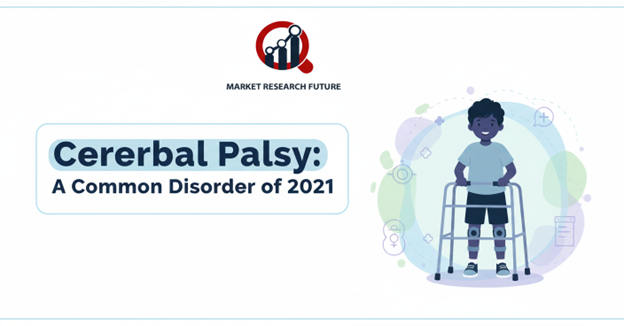Cerebral Palsy: A Common Disorder of 2021

Cerebral palsy Introduction
Cerebral palsy (CP) is one of the most common developmental disorders, primarily affecting movement, coordination, and muscle control. It is caused by abnormal brain development or damage to the developing brain, usually before birth, during birth, or in early childhood. The condition often results in permanent impairment of motor functions and may also affect other vital abilities such as speech, hearing, vision, swallowing, and cognition.
According to reports, around 10,000 babies are born with cerebral palsy in the U.S. every year. Similarly, the National Institute for Health and Care Excellence (NICE) estimates that 1 in every 400 babies in the UK is diagnosed with CP, while approximately 18,000 new cases are identified annually worldwide.
Understanding cerebral palsy—its causes, classification, and symptoms—is essential for early diagnosis, improved treatment, and better quality of life for those affected.
Why Cerebral Palsy Matters?
Cerebral palsy is not just a motor disorder; it is a lifelong condition that affects individuals, families, and healthcare systems. Its significance lies in:
- Public Health Impact: CP remains one of the leading causes of childhood disability worldwide.
- Early Intervention Needs: Timely therapy and rehabilitation can significantly improve mobility and reduce complications.
- Quality of Life: Children with CP often require long-term medical, educational, and social support.
- Healthcare Burden: The cost of treatment, rehabilitation, and assistive technology places a significant financial strain on families and healthcare providers.
Classification of Cerebral Palsy
Cerebral palsy is classified based on the type of movement disorder and the areas of the brain affected. The main types include:
- Spastic Cerebral Palsy
- The most common type, characterized by stiff muscles and awkward movements.
- It can affect different parts of the body:
- Spastic diplegia/diparesis: Mainly affects the legs.
- Spastic hemiplegia/hemiparesis: Affects one side of the body.
- Spastic quadriplegia/quadriparesis: Affects both arms and legs, often the most severe form.
- Ataxic Cerebral Palsy
- Involves problems with balance and coordination.
- Children may experience unsteady walking, tremors, and difficulties with precise movements.
- Mixed Cerebral Palsy
- Some children exhibit symptoms of more than one type, most commonly spastic and athetoid features.
Symptoms of Cerebral Palsy
Symptoms vary depending on severity but often appear within the first year of life. Early recognition is critical for effective intervention.
Signs in babies under 6 months:
- Poor head control when lifted.
- Persistent stiffness or unusual floppiness.
- Arching of the back and overextension of the neck when held.
- Crossing of legs when lifted.
Signs in babies over 6 months:
- Difficulty bringing hands together.
- Preference for using one hand while the other remains stiff.
- Inability to roll over in either direction.
- Difficulty bringing hands to the mouth.
Regional Analysis
The prevalence of cerebral palsy varies across the globe, largely influenced by the quality of healthcare infrastructure and availability of specialized services. In North America, advanced neonatal care and high public awareness facilitate early detection and timely therapy for affected children. Europe benefits from strong government initiatives and comprehensive healthcare programs, which provide rehabilitation services and assistive care to improve quality of life.
The Asia-Pacific region is witnessing a rising prevalence of CP, driving significant investments in paediatric care and rehabilitation, particularly in countries like India, China, and Japan. In Latin America, gradual improvements in healthcare systems are contributing to higher rates of early diagnosis and intervention.
Meanwhile, the Middle East and Africa face challenges due to limited resources, but international collaborations and partnerships are helping expand access to diagnostics, rehabilitation, and supportive care.
Conclusion
Cerebral palsy is a complex neurological disorder with lifelong implications. Although previously believed to result primarily from oxygen deprivation at birth, research shows that most cases arise from abnormal brain development or early brain damage.
While there is currently no cure, early diagnosis, physical therapy, medical intervention, and assistive technologies can greatly improve mobility, independence, and overall quality of life. As global healthcare systems evolve, the focus is increasingly on early intervention, inclusive education, and lifelong support to ensure better outcomes for individuals living with CP.

Leave a Comment